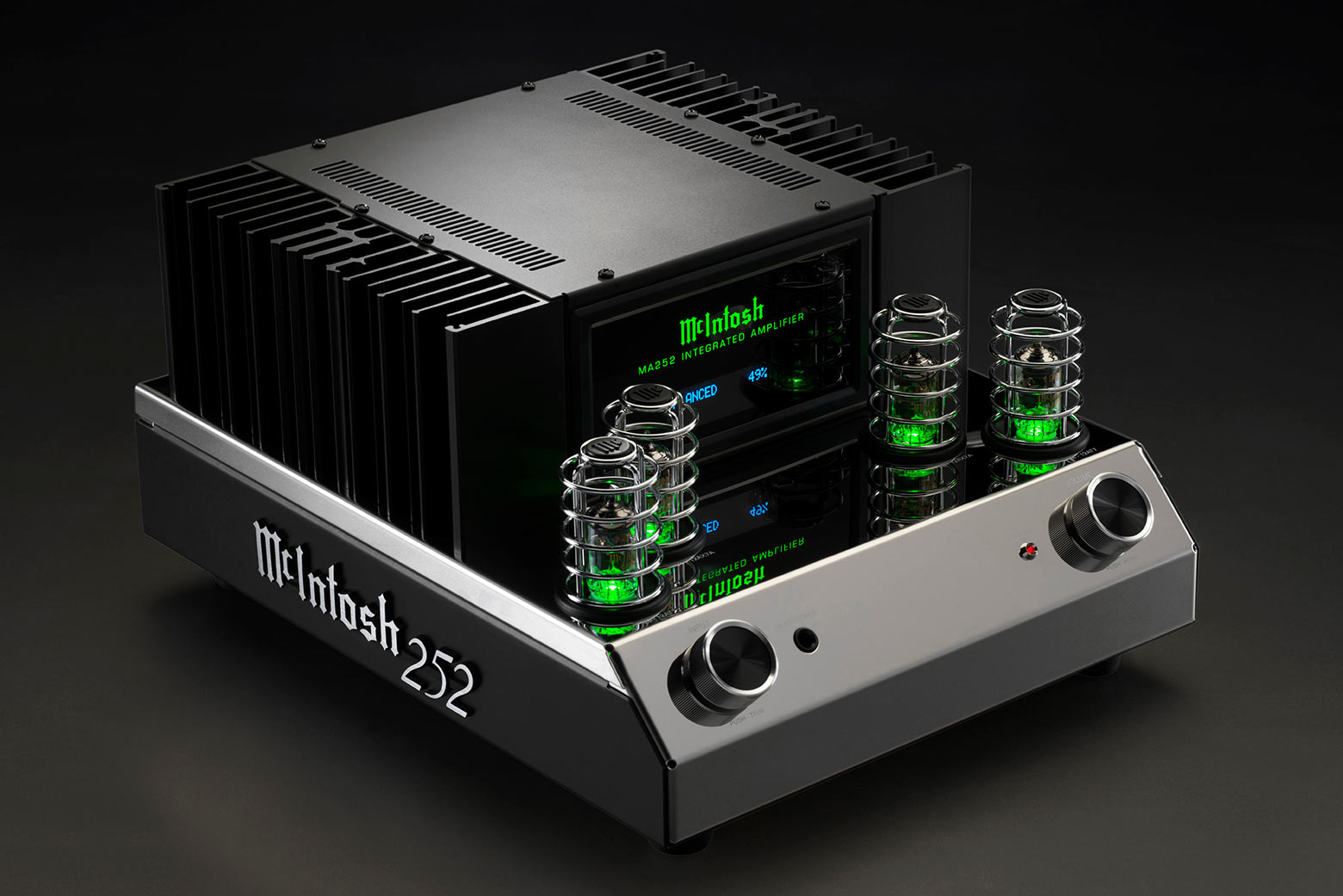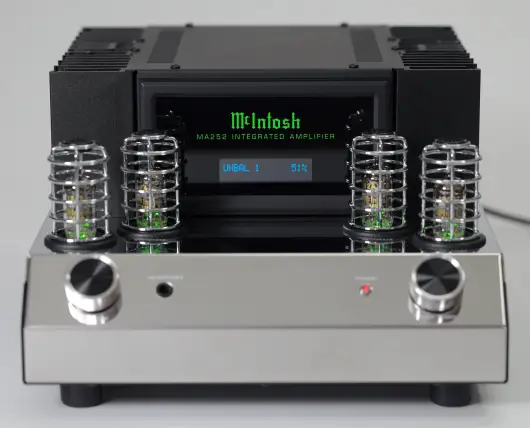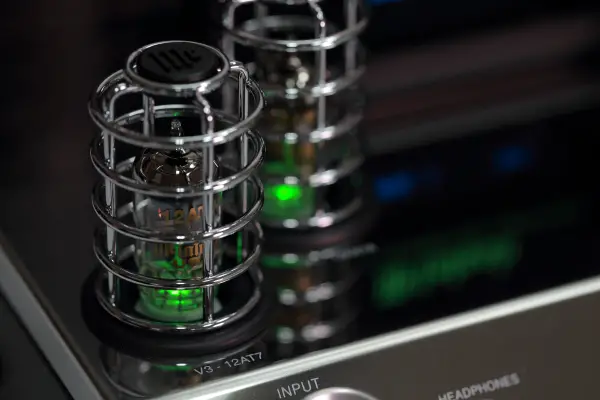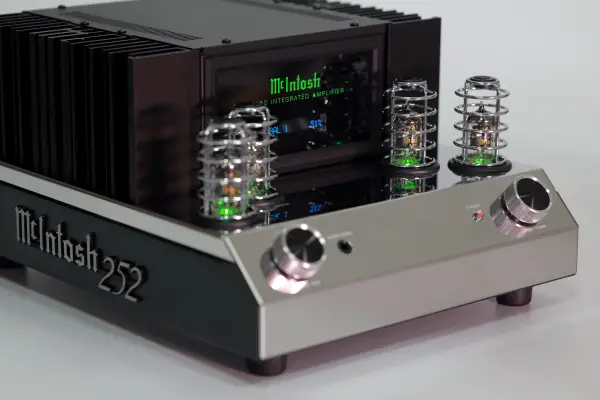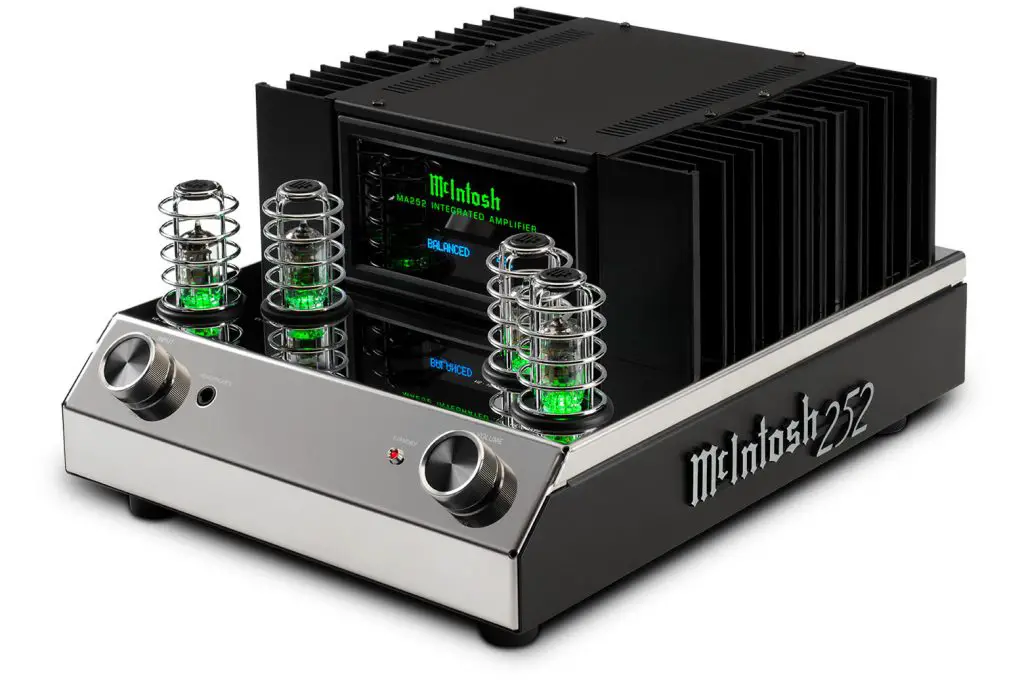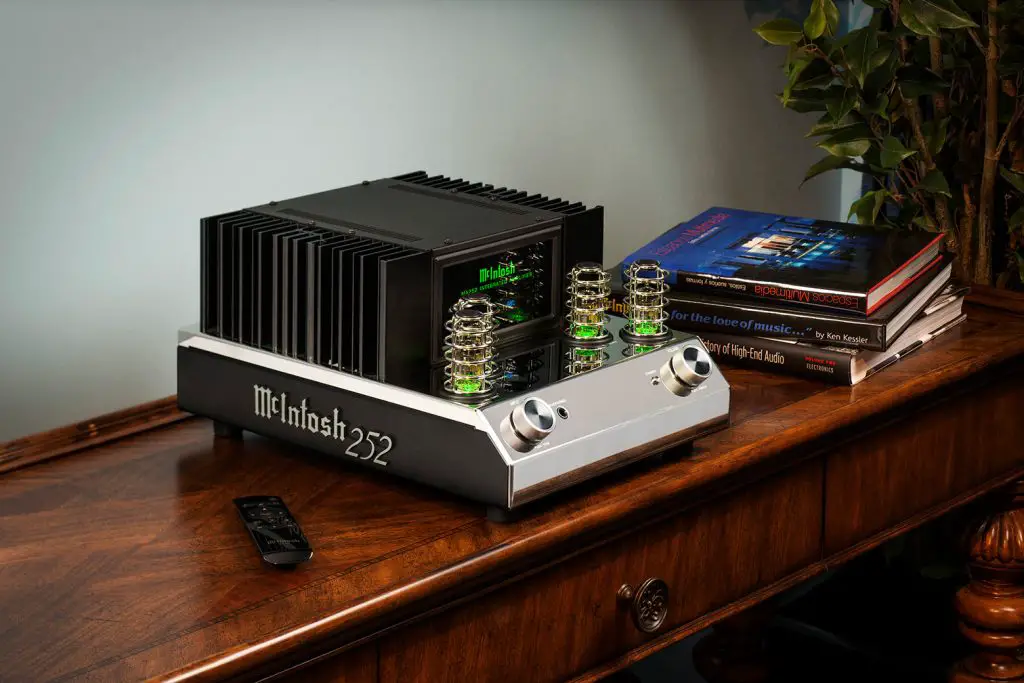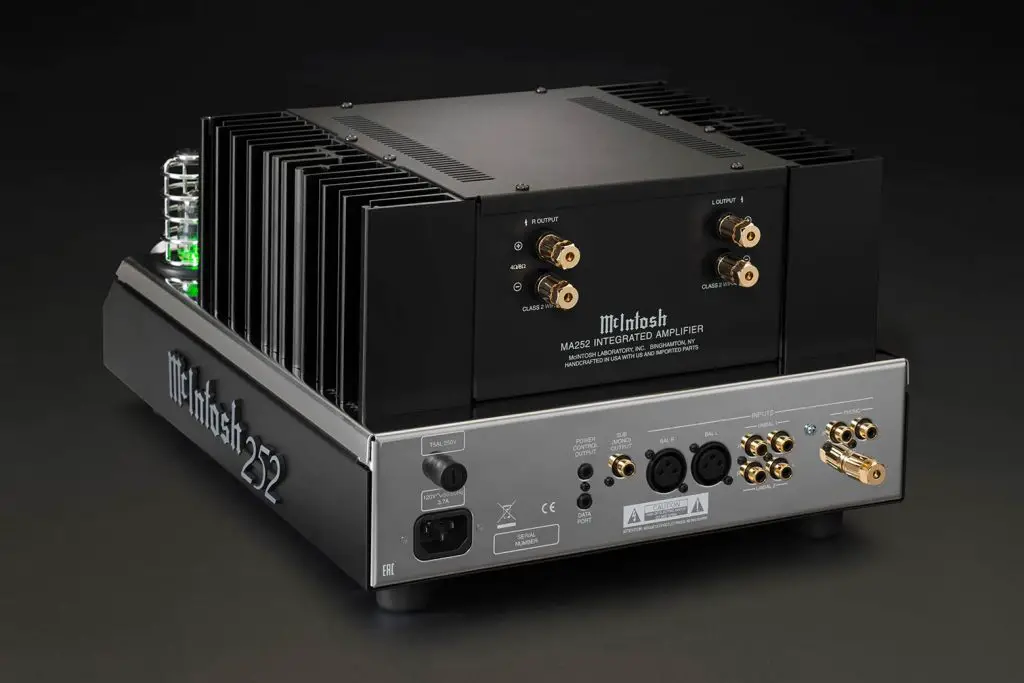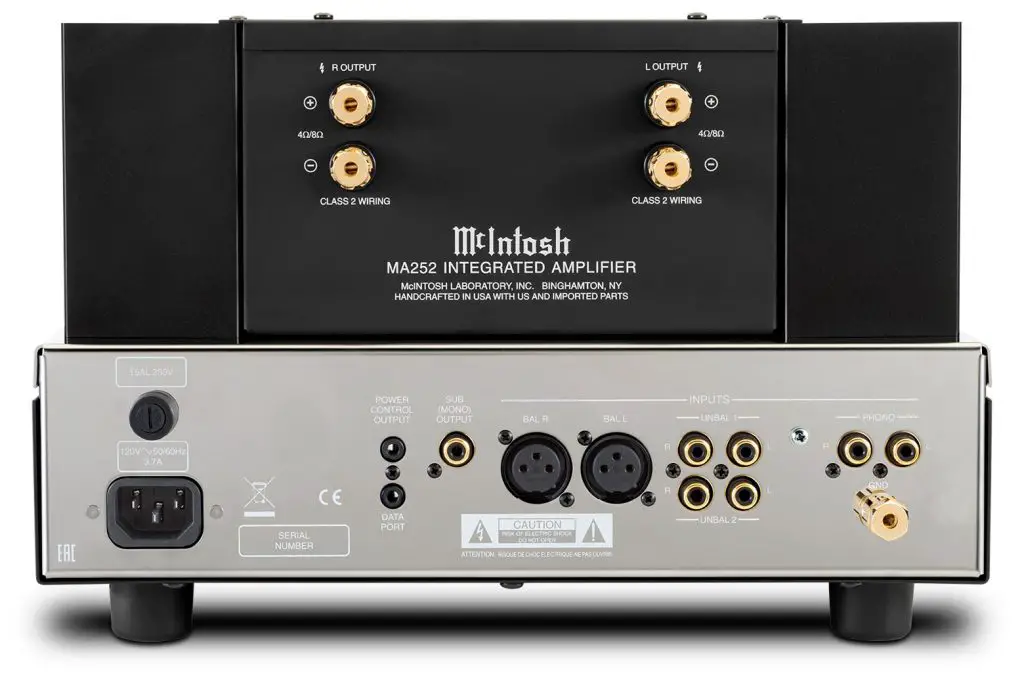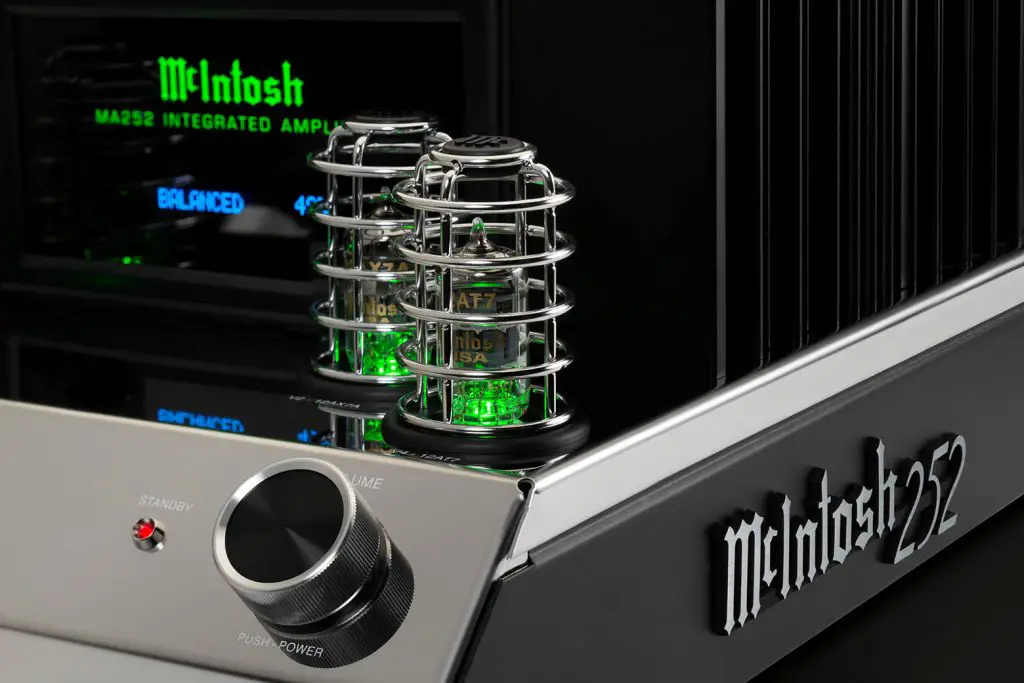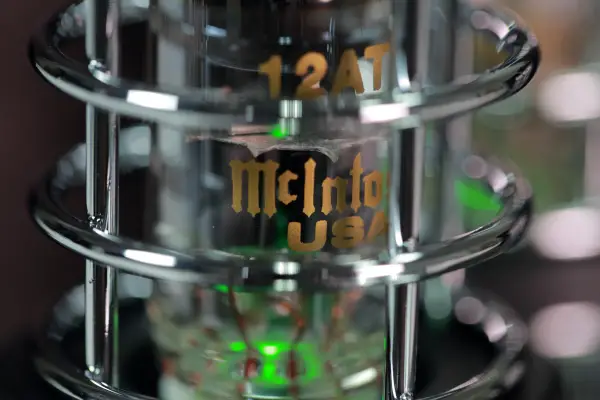McIntosh MA252 Integrated Amplifier Review
If you like vintage style, have an irreplaceable emotional attachment to classic industrial design, and value a smooth interface during operation, then you should pay attention to the McIntosh MA252 Integrated Amplifier. If you do not require extreme audio performance from this system but prioritize comfortable and pleasant sound, and occasionally want to blow the roof off while also being able to handle the hidden hot-blooded factor in your heart, then you should try the McIntosh MA252 Integrated Amplifier.
The MA252 Integrated Amplifier is the first vacuum tube and solid-state amplifier that McIntosh has released in almost 70 years. In the history of McIntosh, they have released famous and classic tube amplifiers and also outstanding quality, transformer-based transistor amplifiers. However, they have never released a hybrid tube/solid-state amplifier until now, and the MA252 is a stunning debut.
The Design
How does it stun? I have to start with the appearance because the MA252 is too beautiful. Its appearance is based on the MC75, MC275, MC240, and other power amplifiers, with a three-dimensional engraved model number “McIntosh 252” on the side of the chassis. This design is no different from their classic tube siblings. The stainless steel polished chassis, after processing, is not easily prone to rust even after long-term use.
McIntosh’s tube machines have a slanted angle on the back and terminal on the slant, while the MA252 does the opposite and puts this highly recognizable slant on the front, with two knobs on the slant. These two vintage-style knobs, which are the only two control buttons on this amplifier, can be pressed and rotated to control the volume and source selection, respectively.
The McIntosh MA252 amplifier has a total of three inputs, including a phono input, which can be connected to a turntable to play vinyl records. The front panel also has a headphone jack and a blue power indicator light.
The McIntosh MA252 is designed with a tube preamp and transistor power amp. The preamp section uses 2 12AT7 and 2 12AX7 tubes, with chrome-plated protective covers on the 4 tubes to prevent touching the hot tubes.
The manufacturer has cleverly designed LED lights on the sockets of the 4 signal tubes. When the machine is turned on, the base of the tube lights up orange, and after 15 seconds, when the tube is hot, the light turns green, the same color as the signature words on the top and bottom of the display screen.
This light also serves another function. If the amplifier output is overloaded, the light color will change to orange, telling you that the MA252’s output is now in the red zone. At this time, McIntosh will activate their power guard protection circuit to prevent clipping distortion and protect the speaker from sudden peak output that could burn out the speaker.
The power amp uses a transistor amplification circuit. The amplification circuit is in a dual mono configuration, with left and right channels separated and the amplification transistors each locked onto the large exposed heatsinks.
These heatsinks are the latest development by McIntosh, with the MC logo on them. This not only serves as a brand marking to make the machine look better but also increases the area of the heatsinks to improve heat dissipation efficiency.
In daily use, even after several hours of operation at 65% volume output, the temperature of the lid on the chassis and the heatsinks is very low, only slightly higher than the body temperature. Effective heat dissipation is ultimately a good thing for machine parts, extending their lifespan.
Unlike previous McIntosh amplifiers that I have reviewed, the MA252 does not have separate output terminals for 8 and 4-ohm speakers, it only has one set. When connected to 8-ohm speakers, it can continuously output 100W per channel, and when connected to 4-ohm speakers, it has 160W.
It looks so delicate, but it’s not a class D amplifier, and it has such power output, the McIntosh MA252 is really not to be underestimated. Only one set of speaker output, is there an output transformer? Yes. McIntosh has a signature design of adding an output transformer to transistor amplifiers.
The McIntosh MA252 amplifier is no exception. It is equipped with a transformer produced by Semiconductor Components Industries, LLC, paired with the company’s semiconductor processor, which effectively reduces output distortion and maintains a lower working temperature. This means that McIntosh’s engineers have designed the MA252 to work efficiently at low energy loss.
There is more to the complexity than this. To create low distortion, attention must be paid from the source. McIntosh uses an “electro-magnetic switching” in all low output connections and function switching connections in the preamp circuit.
They use a glass tube sealed with an oxygen-free gas, with fine metal needles inserted at both ends, overlapping but not touching. The distance between the two needles is measured in thousandths of an inch. Once the signal is switched in, the two sections of the needle are energized, creating a magnetic force that causes the two needles to attract and touch. Because the glass tube is in an oxygen-free environment, it will never oxidize. This is not surprising on the flagship MA9000, but it is unusual on the MA252.
The McIntosh MA252 integrated amplifier is a purely analog amplifier and does not include a DAC (digital-to-analog converter) internally. It has two RCA single-ended inputs, one XLR balanced input, and one MM phono input for amplifying analog signals. The inclusion of a low-frequency output allows users to set up a 2.1-channel system, with the MA252 handling the left and right channels and the low-frequency output connecting to a subwoofer.
It is worth noting that the MA252 is not the only McIntosh amplifier without an internal DAC, as this is a common feature across the industry and not all amplifiers include it. The decision to include or exclude certain features in a product is typically based on a variety of factors, including cost, available technology, and market demand.
EQ (equalization) is a common feature in amplifiers that allows users to adjust the frequency response of the audio signal by boosting or cutting certain frequency ranges. This can be useful for fine-tuning the sound to personal preferences or to compensate for the acoustics of the listening space.
The McIntosh MA252 includes a simple EQ with controls for the high and low frequencies, which can be useful for making small adjustments to the sound. Some amplifiers, like the MA9000, include more advanced EQ features with multiple independent bands, allowing for greater control over the frequency response.
However, it is worth noting that EQ should be used with caution, as too much boosting or cutting of certain frequencies can result in an unnatural or unbalanced sound. It is generally best to use EQ sparingly and to make small adjustments rather than large ones.
The Sound Performance
It sounds like the MA252 is a capable amplifier that works well with both bookshelf and floor-standing speakers. When paired with the KEF LS50, it is able to deliver a precise and detailed sound with a warm and smooth character. When paired with the Elac 310, it is able to create a wide and expansive soundstage and help the Elac 310 sound more open and dynamic.
Overall, it seems that the MA252 is able to deliver good control and detail, as well as a warm and smooth sound character, making it suitable for a variety of speakers and musical styles.
The MA252 gives me a warm, round tone and texture, and the sound seems to have no sharp corners. Especially the transition and slowing, without the piercing high pitch, can also radiate a warm luster, especially under the performance of the Dynaudio Contour 60 floor-standing speaker.
The low-frequency range is heavy in weight but not in quality, and under my speaker placement, the low frequency is cleaner and makes the music more alive. If I require a richer sense of volume, I can just bring the speaker closer together and slightly retreat, and I can feel the richness of the low-frequency increase.
Of course, I can also use the low-frequency EQ adjustment, but after trying it out, I feel that the frequency response is not smooth and natural enough after the EQ adjustment, so I prefer to keep it in its most natural tone.
The McIntosh MA252 amplifier has rich details and information, but it is slightly inferior to its own high-end models. However, I suspect this has to do with the vacuum tube used in the front stage, which slightly softens the sound signal. This is probably the result of the manufacturer’s intentional tuning.
When I listened to the MA8000, MA8900, and MA9000 before, I could feel their agility and speed thanks to their ample driving force. With the MA252, however, I didn’t feel the same sense of speed. The MA252 is neither too slow nor too fast, but it doesn’t quite match the speed of its higher-end counterparts.
In terms of dynamic response, the MA252 is capable of performing dynamics, but when the dynamics change rapidly, it doesn’t seem as sensitive as its high-end models and doesn’t provide the same instant energy. Overall, the MA252 has a gentle tone and gentle movement.
Even so, it maintains a very fresh sound quality. I believe that this quality is important regardless of whether it is a solid-state or tube device because music is not interesting if it is not alive. Although I emphasized earlier that the McIntosh MA252 has a gentle quality to my ears, it still has the ability to express the liveliness of music when performing.
Listening to a Bryan Adams concert, the sound field is wide and layered, and the enthusiasm of the live audience’s cheers, drumming, and applause expands the dimensions of the space. The crisp texture of the strummed acoustic guitar, combined with Bryan Adams’s signature rough vocals, the mid to high-frequency resolution of the MA252. The liveliness of the vocals and guitar is really good!
As for the drumming, which is strong and powerful, I previously mentioned that the MA252’s low frequencies are not as full and fast-responding as higher-end models, but the slightly relaxed low frequencies also have their own flavor.
Additionally, if paired with bookshelf speakers, whose low-frequency extension and sense of volume are not their strong points, the MA252 will not disappoint in the low-frequency department. I understand now that the super low-frequency output is for this. The slightly conservative low-frequency setting of the McIntosh MA252 is a factory setting that is slightly less powerful, making the MA252 more elegant. If users prefer a heavier taste, they can go with a 2.1-channel setup.
Rupp’s recording of Schumann’s Piano Concerto, as captured by sound engineer Kenneth Wilkinson, is known for its clear and spacious sound quality. The recording begins with a strong performance that showcases the energy of the music, followed by the introduction of a slow theme in which the piano and woodwinds play leisurely and are joined by the richness of the strings.
The piano sound in particular is praised for its clarity and rounded dense particles. When the volume is increased to 68%, the dynamic range of the music becomes more prominent, particularly during the woodwind solo which features warm, textured playing from each instrument.
Wilkinson’s recording effectively captures the live performance of the music, and the sound system used for playback is able to enhance the experience. While the piece itself is not particularly difficult to play, the challenge lies in performing it beautifully and in a balanced manner.
The McIntosh MA252 amplifier, with its retro appearance and modern, uncolored sound, is able to maintain a good balance in the music. Its strings are dense and the bass strings provide a heavy, wave-like sound, while the double bass plays a strong foundation for the string section. The MA252 also has an output protection feature that activates to protect the equipment from damage in the event of excessive volume or sudden, extreme dynamics.
Mahler’s Symphony No. 1, specifically the fourth movement, begins with a flash of cymbals and the sound of thundering drums, setting the stage for a turbulent movement. When the music is played at a volume of 68%, it can be enjoyed without being too loud, but increasing the volume to 80% creates a powerful, almost intimidating sound.
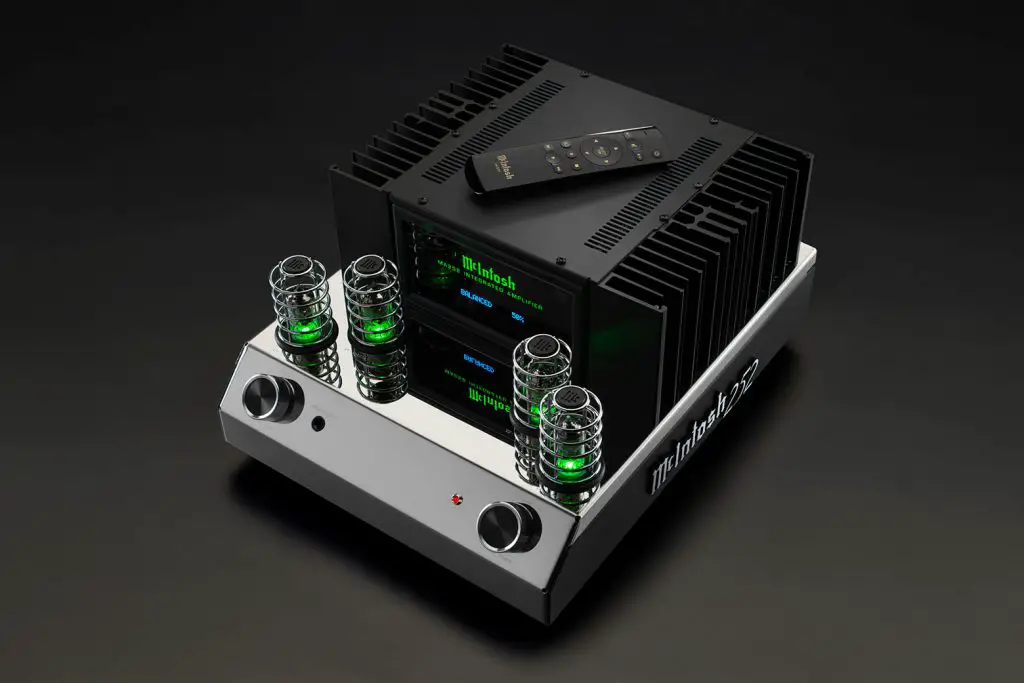
The MA252’s output protection feature is activated in this case, as the sudden loudness of the drumming pushes the dynamic range into the red zone and could potentially damage the equipment. While the MA252 may not be able to handle such extreme dynamics as well as its high-end counterparts, it still performs admirably in the first and final movements, even managing to convey the bright and powerful coda at the end of the first movement.
It’s important to note that while the protection feature will keep the audio safe, it is not advisable to regularly push the volume to extreme levels as it can still potentially harm the equipment.
The Conclusion
Overall, the McIntosh MA252 amplifier is a beautiful and graceful amplifier with a classic, attractive design. Its gentle and flowing sound is full of character, and while it may not meet the highest modern audio standards in terms of transient speed and dynamic contrast, it still performs well in a variety of musical styles. Its output protection feature is a useful addition that helps to ensure the safety of the equipment, even in the face of extreme volume or sudden dynamic changes.
